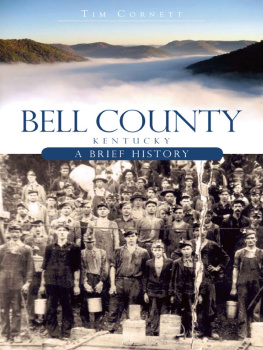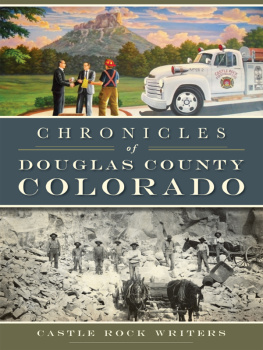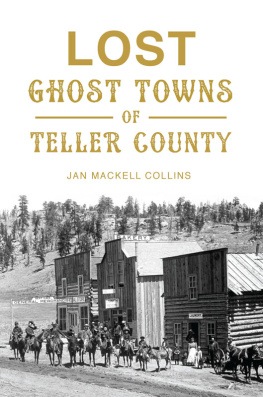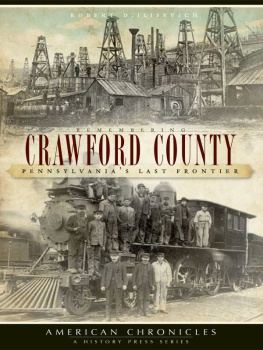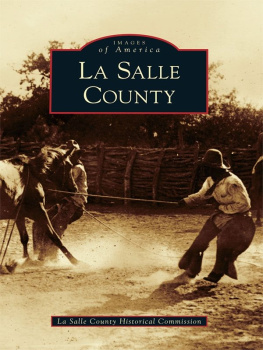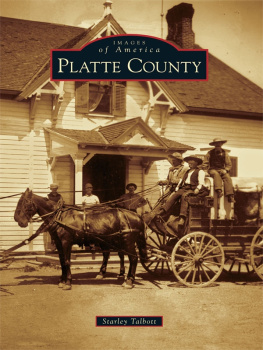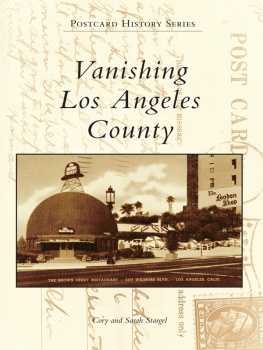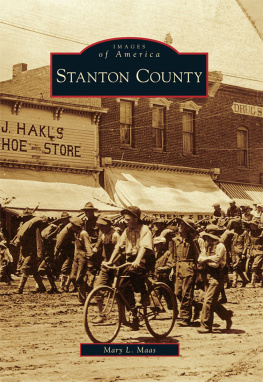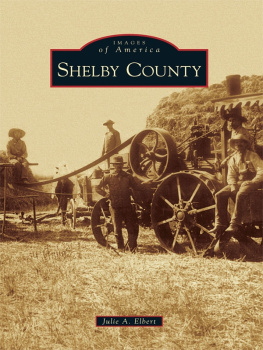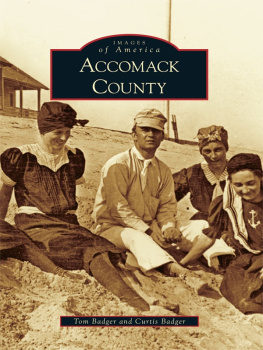A Waterloo County Album
glimpses of the way we were
A
Waterloo
County
Album
Stephanie Kirkwood Walker

Copyright Stephanie Kirkwood Walker, 2002
All rights reserved. No part of this publication may be reproduced, stored in a retrieval system, or transmitted in any form or by any means, electronic, mechanical, photocopying, recording, or otherwise (except for brief passages for purposes of review) without the prior permission of Dundurn Press. Permission to photocopy should be requested from the Canadian Copyright Licensing Agency.
Publisher: Anthony Hawke
Copy-Editor: Andrea Pruss
Design: Jennifer Scott
Printer: University of Toronto Press
National Library of Canada Cataloguing in Publication Data
Walker, Stephanie Kirkwood
A Waterloo County album: glimpses of the way we were / Stephanie Kirkwood Walker.
Includes bibliographical references and index.
ISBN 1-55002-411-6
1. Waterloo (Ont.: County)HistoryPictorial works. I. Title.
FC3095.W38W34 2002 | 971.344 | C2002-902286-X | F1059.W32W34 2002 |
1 2 3 4 5 06 05 04 03 02

We acknowledge the support of the Canada Council for the Arts and the Ontario Arts Council for our publishing program. We also acknowledge the financial support of the Government of Canada through the Book Publishing Industry Development Program and The Association for the Export of Canadian Books, and the Government of Ontario through the Ontario Book Publishers Tax Credit program.
Care has been taken to trace the ownership of copyright material used in this book. The author and the publisher welcome any information enabling them to rectify any references or credit in subsequent editions.
J. Kirk Howard, President
Printed and bound in Canada.
Printed on recycled paper.
www.dundurn.com
Dundurn Press
8 Market Street
Suite 200
Toronto, Ontario, Canada
M5E 1M6
Dundurn Press
73 Lime Walk
Headington, Oxford,
England
OX3 7AD
Dundurn Press
2250 Military Road
Tonawanda NY
U.S.A. 14150
For
Jim,
still surprised to be in Waterloo County,
&
Patricia,
who remembers when she was.
Table of Contents
Opening Thoughts
On a warm day in early June 1946, a man named Chandler arrived at our house in Blair to take photographs marking my grandfathers retirement. In 1894, Matthew Wilkinson Kirkwood had come to Preston from Peel County to follow his dream of working for the railway. Now, at seventy, having stayed on through the war years, he was retiring as general manager of the Grand River Railway and the Lake Erie and Northern Railway. The photo feature, which duly appeared in the Globe and Mail, was entitled Railway Veteran Retires after 52 years to Vest-Pocket Paradise.

Mr. Chandlers visit had created unaccustomed activity that day in Paradise as he herded the family from one promising location to the next. After this particular photograph was taken, the three of us in it were coached for a repeat. This time, he said to me, remember to look at the geese, not at the camera, and dont get too close to the edge. But that second shot didnt work nearly so well. In this one, my backward glance, which I like to think shows an early regard for the mystery of photography, breaks through the picture surface with innocent queries. Just what is going on here? Who is this man with the camera and why am I wearing my good shoes to feed the geese?
This tableau neatly gathers together elements of my interest in old photographs of Waterloo County and in a book more visual than verbal. There is more going on here than the moment we glimpse; the photograph contains hints of early German settlement, which remain mute without description. These geese float on a pond created to supply energy to a building, which was our home. Built around 1825, with thick stone walls and set into a hillside, the structure served multiple functions through the nineteenth century, as need and opportunity demanded. A tannery to begin with, it had also been a distillery, a fish hatchery, and, as the nineteenth century turned into the twentieth, a source of electricity for the street lights in nearby Preston. The Galt Daily Reporter, using some of the same photographs, noted the history of the site and the fact that, in the twenty years since he had purchased the property, my grandfather had transformed it into a virtual fairyland of beauty and a miniature game preserve. Change. Before this so-called fairyland there was a plain, functional, early settlement building; before the dam there was bush, a small creek, and a swamp. Constant change moves over the surfaces of the county, unpredictably but apparently inevitably that is really at the heart of what is going on.
Photographs need contexts: they bear an elusive relation to story. If the image is familiar, stories can tumble into imagination, pulling memory along. If there are threads that can be drawn into historical narrative, success will depend on a working knowledge of the past. My sister, whose breadcrumbs are neatly cast into the centre of the photograph, inherited our grandfathers interest in family and local history, and his papers. Fed by her spirit of inquiry, a cache of photographs, and the rich historical awareness that distinguishes residents of Waterloo County, my delight in the narrative density of images is unending. The pond in this photograph, its surface alive under metaphorical shadows from other times, is a home base for my imagination and a centre of what might be termed my primary landscape.
Sensitivity to a local past, which many share, fosters legend. When I was eight or nine years old, my fair weather shortcut from home to the two-room school in Blair followed a path that began with a long climb, edged along the cemetery fence, and then dropped steeply down to the schoolyard. When our teacher read Mabel Dunhams Trail of the Conestoga (a novel that depicts the first Mennonite settlers arrival in Waterloo County) to the class, the details were easily absorbed by our imaginations. High on that cemetery hill, under a tall tree, sat the grave marker of John Bricker; his death in the novel, when he was just our age, tuned each listening childs ears to a past that lay very close to the village that belonged to us.
From the top of that hill, which is wooded now but was bare then, we had a stunning panoramic view of the Grand River. We could see the river bend along the edge of the wide flood plain, join the Speed River at Preston, and then move away toward Galt with its three bridges. John Moss, a Canadian novelist and critic who spent part of his childhood in a house on that very hill, has described his own sense of this vibrant past: I grew up in borrowed territory. My forebears settled the Grand River Valley, Mennonites and Mohawks pool in my genes, and layer upon layer of newcomers were immersed in their generous confluence, until in my childhood we thought ourselves historically inevitable, being in Waterloo County on the very cusp of time.
Next page







